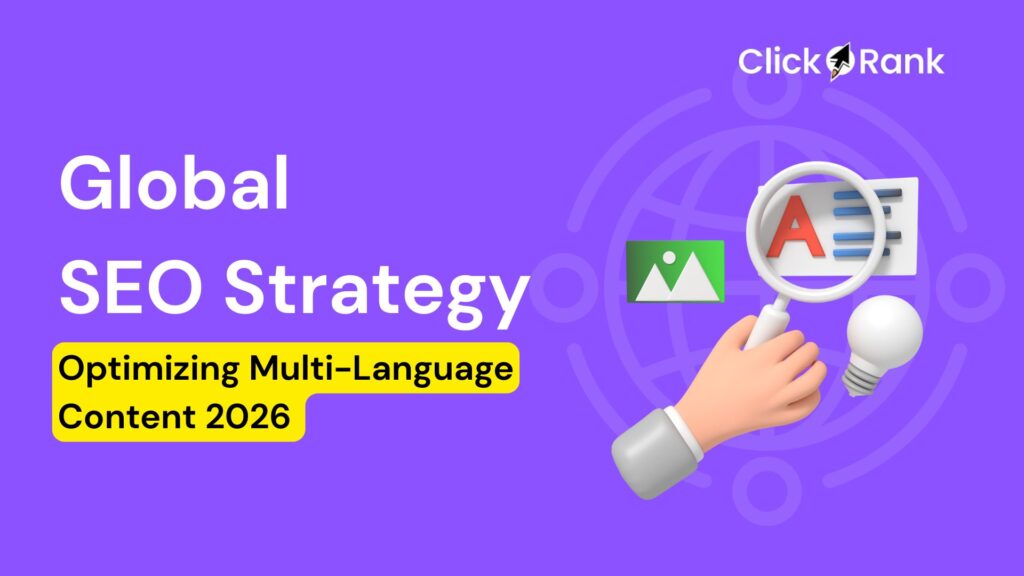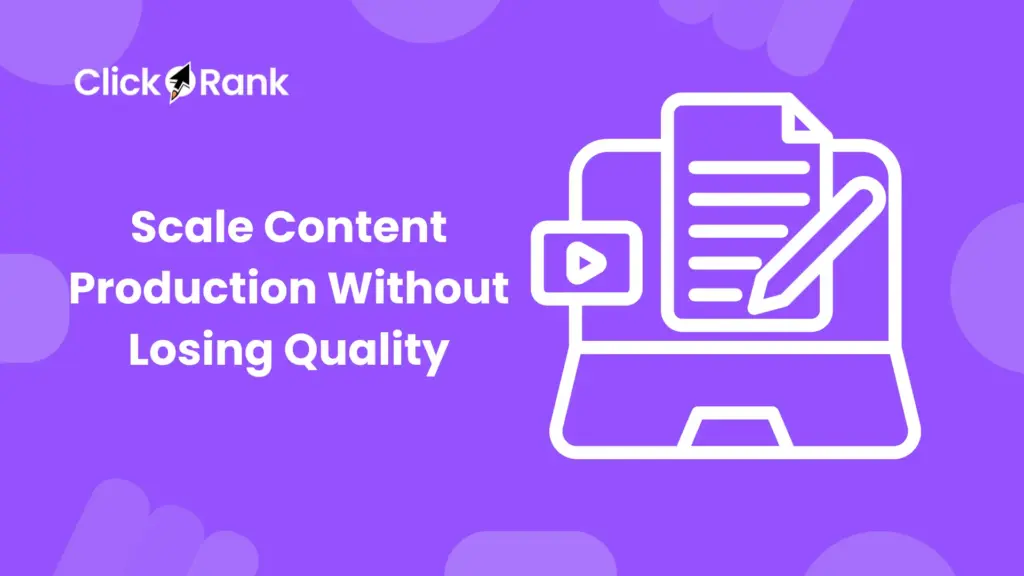Search engine optimization (SEO) is no longer just about sprinkling keywords and fixing a few meta tags. As the digital landscape grows more complex, businesses and marketers must adopt advanced SEO strategies to remain competitive and visible in search results. This guide dives deep into everything you need to know about Advanced SEO, exploring technical elements, content strategies, user experience improvements, and the powerful role AI plays today. Along the way, you’ll discover how tools like ClickRank can streamline your SEO efforts and give you a local edge.
What is Advanced SEO?
Advanced SEO involves using sophisticated methods and technologies to optimize your website beyond the basics. While traditional SEO tackles fundamental practices such as keyword integration, basic On-page SEO, and link building, advanced SEO requires a more nuanced, data-driven approach.
It includes technical fixes that improve crawlability, leveraging AI to uncover keyword opportunities, optimizing for voice search, and ensuring your site delivers an exceptional user experience.
Advanced SEO is about working smarter, not just harder, to improve rankings, traffic, and conversions in increasingly competitive markets.
What is the Difference Between Basic and Advanced SEO?
To understand the difference, consider a beginner SEO checklist: optimizing title tags, adding meta descriptions, and submitting a sitemap. These are essential but often insufficient in today’s search ecosystem.
Advanced SEO incorporates:
- Technical audits that identify and resolve crawl errors, slow loading times, and indexing issues.
- Content strategy that aligns with search intent, uses long-tail keywords, and updates existing assets.
- Data analytics to prioritize SEO actions based on performance.
- Emerging technologies like AI-powered tools and voice search optimization.
In essence, basic SEO sets the foundation, while advanced SEO builds a robust structure that adapts and thrives.
Why You Need Advanced SEO Strategies?
Google’s algorithms have evolved significantly, prioritizing relevance, speed, and user satisfaction. Without advanced SEO, you risk being outranked by competitors who fine-tune every aspect of their sites.
Advanced SEO helps you:
- Capture high-intent traffic that converts better.
- Identify and fix hidden technical issues before they impact rankings.
- Stay ahead by adopting trends like AI and voice search early.
- Make informed decisions using data rather than guesswork.
If your goal is sustainable growth and not just temporary boosts, advanced SEO is a must-have.
What is Core Components of Advanced SEO?
Lets take a Technical SEO Deep Dive now:
Website Speed Optimization
Page speed is a critical ranking factor. Slow websites frustrate users, increase bounce rates, and lose potential conversions. Techniques to speed up your site include:
- Image compression: Reduce file sizes without losing quality.
- Code minification: Streamline HTML, CSS, and JavaScript.
- Caching: Serve stored versions of pages to reduce load times.
- Server upgrades: Use faster hosting or CDN services.
Google’s Core Web Vitals metrics focus on loading performance, interactivity, and visual stability, making speed optimization more important than ever.
User Experience (UX) Improvements
UX encompasses how visitors interact with your site. A seamless UX means intuitive navigation, clear calls to action, and accessibility across devices.
Improving UX involves:
- Making your website mobile-friendly.
- Simplifying site structure to reduce clicks.
- Ensuring readability with appropriate fonts and colors.
- Avoiding intrusive pop-ups.
Google interprets positive UX signals as a sign of quality, helping improve rankings.
Crawling and Indexing Issues
Search engines use bots to crawl websites and index content. If crawlers encounter errors like broken links, blocked pages, or duplicate content, your site’s visibility suffers, and your website’s crawlers budget wasted.
Advanced SEO includes:
- Regular audits using tools like Google Search Console.
- Fixing broken links and redirects.
- Implementing canonical tags to resolve duplicates.
- Optimizing robots.txt and XML sitemaps.
What Are the Most Effective Content SEO Strategies for 2025?
Google rewards content that directly satisfies user queries. This means understanding search intent (informational, transactional, navigational) and tailoring your content accordingly.
High-Quality, Search Intent-Aligned Content
Writing for search intent requires:
- Researching keywords to grasp what users seek.
- Creating comprehensive, actionable content.
- Including examples, visuals, and FAQs to add value.
Targeting Long-Tail Keywords:
Long-tail keywords are longer, more specific phrases. Though they get less traffic, their visitors tend to have higher conversion rates due to precise intent.
Benefits of targeting long-tail keywords:
- Less competition.
- Easier to rank.
- Better alignment with niche audience needs.
Updating Old Content:
Content freshness matters. Content Optimization or Regularly revisiting existing articles to add new insights, update stats, or improve readability keeps your site relevant and can boost rankings.
What Are the Main On-Page Optimization Steps to Boost Rankings?
Optimizing Meta Titles and Descriptions:
Meta titles and descriptions act as your site’s “advertisement” in search results. They must be compelling, include primary keywords early, and encourage clicks.
Using Schema Markup:
Schema or structured data helps search engines understand your content context. Implementing schema can unlock rich snippets, FAQs, and other enhanced search features.
Internal Linking Best Practices:
Strategic internal links distribute page authority, improve crawlability, and guide users through related content, enhancing engagement and SEO.
What Are the Main Off-Page SEO and Link Building Steps to Boost Rankings?
Link building remains a powerful ranking factor. Focus on:
- High-quality backlinks: Links from authoritative, relevant websites carry more weight.
- Content marketing: Creating shareable resources like infographics, guides, and case studies.
- Online reputation management: Encouraging positive reviews and managing your brand image.
Top 3 Advanced Keyword Research Techniques
Using AI-Powered Tools for Keyword Research:
AI tools analyze large datasets to identify emerging trends and untapped keywords faster than traditional methods.
Search Intent Analysis:
Determining what users truly want behind a query helps target the right keywords and create fitting content.
Targeting Competitive Keyword Opportunities:
Advanced SEO identifies gaps competitors neglect, opening doors to new traffic streams.
How Does User Experience (UX) Impact SEO Performance?
Good UX reduces bounce rates and increases time on site, positive signals for Google.
Focus on:
- Mobile optimization.
- Fast loading speeds.
- Clear navigation.
- Readable, engaging content.
Leveraging Data and Analytics for SEO Success
Tools like Google Analytics and Search Console track user behavior, traffic, and technical issues.
ClickRank enhances this by:
- Offering AI-driven audits.
- Prioritizing fixes that yield the highest impact.
- Simplifying complex data into actionable insights.
How To Enhance Local SEO Optimization Using ClickRank?
Local SEO targets nearby customers, crucial for brick-and-mortar businesses.
ClickRank helps by:
- Quickly identifying local SEO problems such as inconsistent business listings or missing local schema.
- Providing easy, one-click fixes to optimize Google My Business and local citations.
- Offering tailored advice to enhance visibility in Google Maps and local search results.
Emerging Trends in Advanced SEO (2025 and Beyond)
- Voice Search and AI: Voice assistants are growing in popularity; optimizing for natural language queries is essential.
- Video and Multimedia SEO: Videos boost engagement and rankings when properly optimized.
- Core Web Vitals Improvements: Google continues to emphasize page experience metrics.
What Are The Common Advanced SEO Mistakes to Avoid?
- Overusing keywords (keyword stuffing).
- Ignoring site speed and technical errors.
- Focusing only on content while neglecting UX and technical SEO.
Mastering Advanced SEO requires a balanced approach of technical excellence, strategic content, user-focused design, and smart use of data.
Tools like ClickRank make it easier than ever to audit and optimize your SEO, especially for local businesses aiming to dominate their markets.
Start your journey today, visit clickrank.ai and run your free SEO audit to uncover actionable insights that can boost your site’s visibility and growth.
What Makes SEO “Advanced”?
It’s the combination of technical fixes, data analysis, content strategy, and emerging technology adoption.
How Long Does It Take to See Results from Advanced SEO?
Typically 3 to 6 months, depending on industry and competition.
Can Small Businesses Benefit from Advanced SEO?
Yes, especially in local markets and niches.
How Does ClickRank Simplify Advanced SEO Tasks?
By automating audits, highlighting key issues, and offering actionable fixes with minimal effort.
What Are the Best Tools to Support Advanced SEO?
ClickRank, Google Search Console, Ahrefs, SEMrush, and AI-powered platforms.

![7 Ways to Scale Content Teams with Real-Time SEO in 2026 2 7 Ways to Scale Content Teams with Real-Time SEO [2026]](https://www.clickrank.ai/wp-content/uploads/2025/12/7-Ways-to-Scale-Content-Teams-with-Real-Time-SEO-2026-1024x576.jpg)
